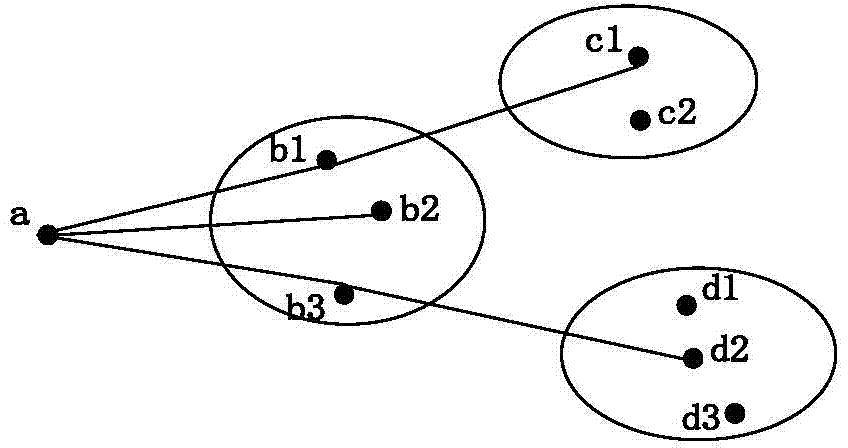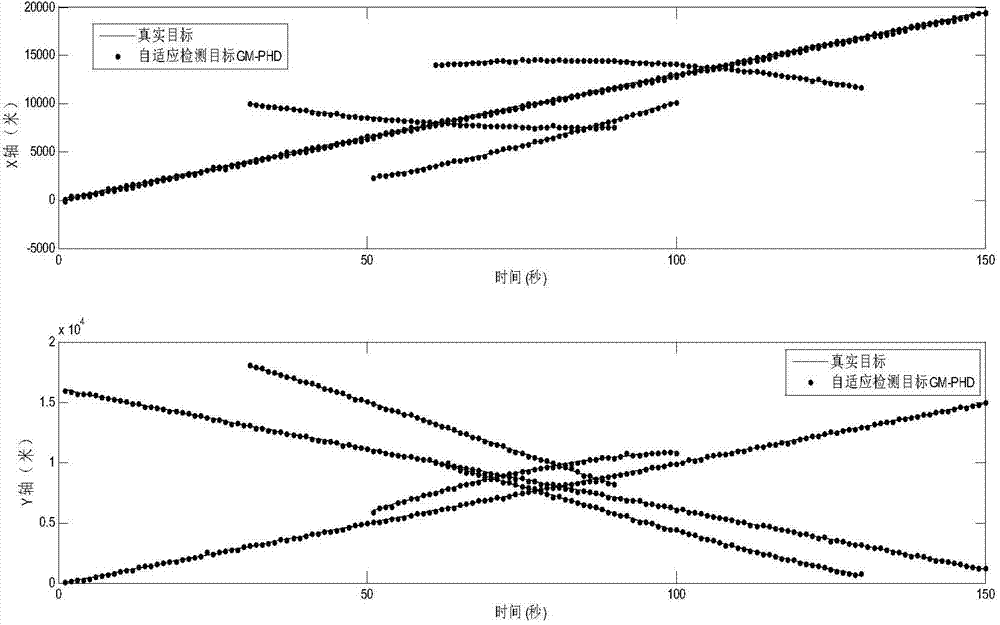Filtering algorithm based on self-adaptive new target strength
A technology of target strength and filtering algorithm, applied in the field of target tracking, can solve the problem of weakening the PHD filter to remove clutter, etc., and achieve the effect of improving the application range and robustness
- Summary
- Abstract
- Description
- Claims
- Application Information
AI Technical Summary
Problems solved by technology
Method used
Image
Examples
Embodiment
[0030] This embodiment is a two-dimensional mobile tracking scene, in which five targets are tracked by the radar, and the targets can appear at any time and at any position, and the distribution of new targets obeys the Poisson distribution. For comparison with standard PHD filters, assuming the starting positions of two nascent targets are known, their intensity functions are:
[0031] γ k ( x ) = Σ i = 1 2 w y N ( x ; m y i , P y ) , Among them, w y =0.03, m γ 1 = ...
PUM
 Login to View More
Login to View More Abstract
Description
Claims
Application Information
 Login to View More
Login to View More - R&D
- Intellectual Property
- Life Sciences
- Materials
- Tech Scout
- Unparalleled Data Quality
- Higher Quality Content
- 60% Fewer Hallucinations
Browse by: Latest US Patents, China's latest patents, Technical Efficacy Thesaurus, Application Domain, Technology Topic, Popular Technical Reports.
© 2025 PatSnap. All rights reserved.Legal|Privacy policy|Modern Slavery Act Transparency Statement|Sitemap|About US| Contact US: help@patsnap.com



